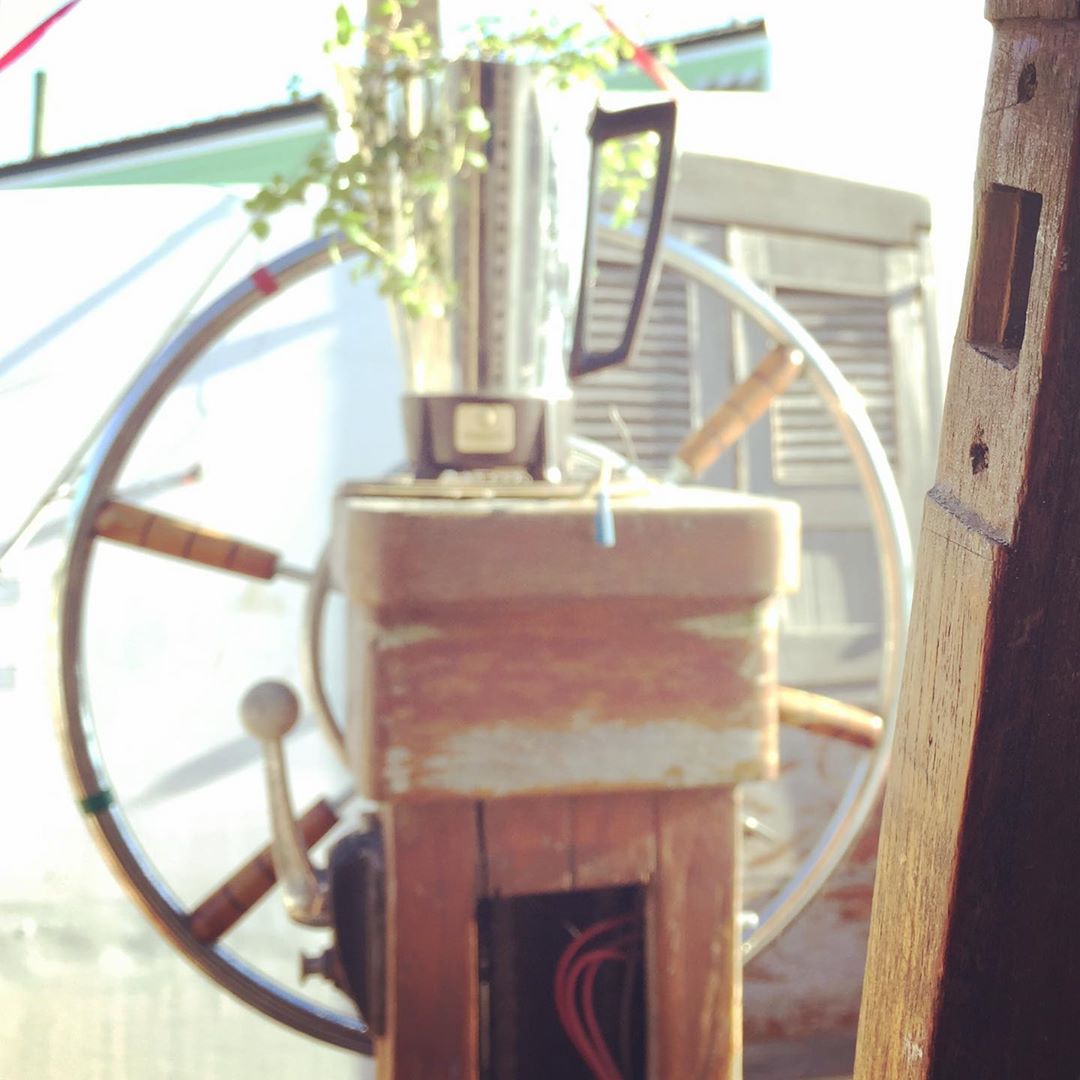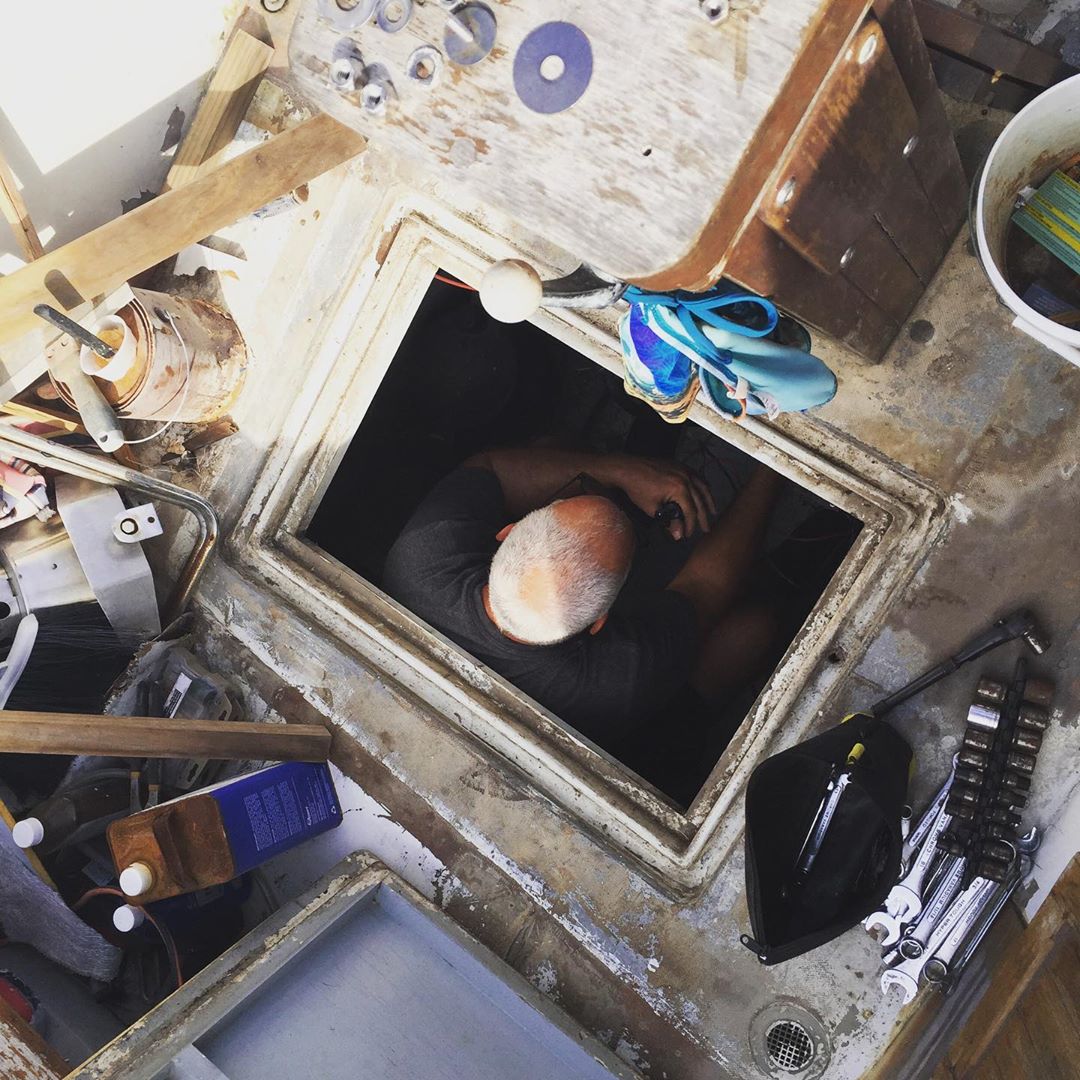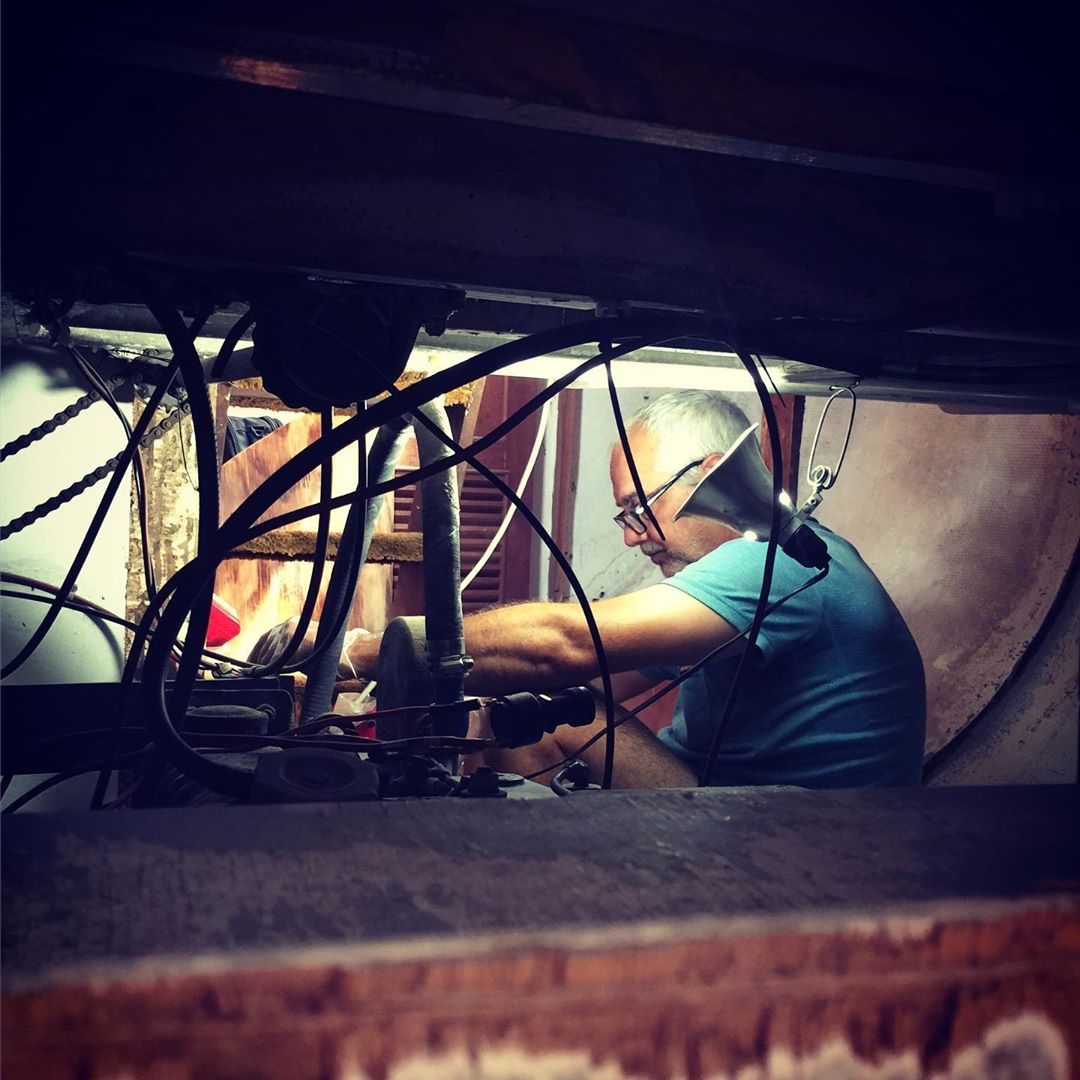I’d never given much thought to how a boat is steered, you know, mechanically. Turns out it’s basically a big Rube Goldberg machine: I turn the wheel, a drunken ferret craps in the corner of an alternate reality, and the rudder turns. The Sea Shanti has a mechanical system – old school – as opposed to a hydraulic system. I gave some very brief thought to converting to hydraulic but decided the more easily repaired mechanical system would do. Thus began the repairs. The system consists of a combination of sprockets, shafts, pulleys, chains, and steel cable. The start of the system is the wheel in the cockpit and the end of the system is the Quadrant and ultimately the rudder. A quadrant, you say? Picture a big, steampunk gear, now cut one quarter of it out like a piece of pie. Get it? Quadrant?
Incidentally, it was where the quadrant connects to the rudder through the hull that had to be repaired when we first put the boat in the water. It was leaking so I had to pull the rudder off the boat to repair it. That took three weeks of terrible work. But as of now, my repair isn’t leaking.
Anyway, the mounting points of several of the pulleys were rotted or otherwise eaten by termites. It wasn’t too bad. What really slowed things down was where a bearing for one of the sprockets mounts through the cockpit floor. Water had been leaking in for years. Once I started excavating the bad wood there was a huge area in need of repair.
It may not seem like a big thing, but it was a huge milestone. After all, it’s one thing to be able to move the boat forward and quite another to point it where you want to go. This post makes as much sense as it can so don’t worry if it makes no sense. Ferrets and such…






I’m so proud of you–you can literally do anything–just like your Dad. Good thing you didnt take after me….